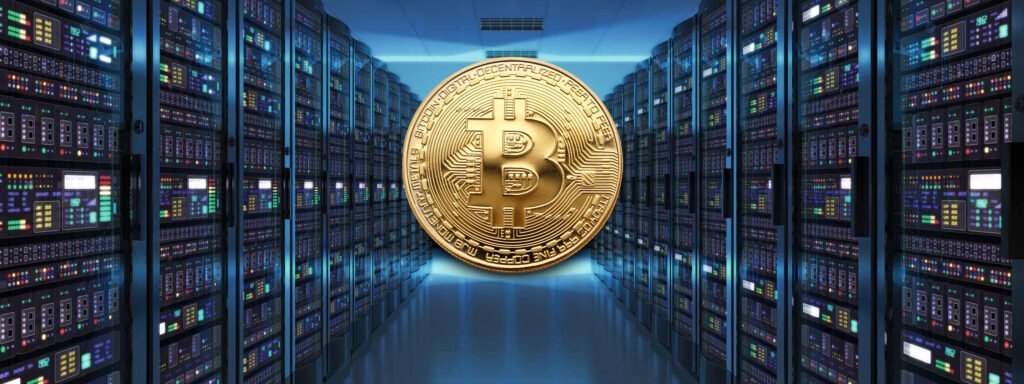The cryptocurrency mining industry has reached unprecedented heights in 2025, with bitcoin mining equipment for sale becoming one of the most searched terms among crypto enthusiasts and investors. Whether you’re a seasoned miner looking to upgrade your operations or a newcomer eager to enter the lucrative world of Bitcoin mining, finding the right equipment is crucial for your success. The current market offers an extensive range of mining hardware options, from entry-level ASIC miners perfect for beginners to industrial-grade machines capable of generating substantial returns. With Bitcoin’s price volatility and increasing network difficulty, selecting the right mining equipment can make the difference between profitable operations and costly mistakes. This comprehensive guide will walk you through everything you need to know about purchasing mining equipment, including the latest models, pricing strategies, and where to find the most reliable sellers.
Understanding Bitcoin Mining Equipment Fundamentals
Bitcoin mining has evolved significantly since its inception, transforming from simple CPU mining to sophisticated ASIC (Application-Specific Integrated Circuit) operations. Modern mining equipment represents the pinnacle of specialized hardware engineering, designed exclusively for solving Bitcoin’s complex cryptographic puzzles. These machines consume substantial amounts of electricity while generating computational power measured in terahashes per second (TH/s).
The foundation of any successful mining operation lies in understanding the relationship between hash rate, power consumption, and profitability. Hash rate determines how many calculations your equipment can perform per second, directly impacting your chances of successfully mining a block. Power consumption affects your operational costs, while the initial equipment purchase price determines your return on investment timeline.
Current mining equipment operates on various chip architectures, with newer generations offering improved efficiency ratios. The efficiency is typically measured in watts per terahash (W/TH), with lower numbers indicating better performance. Advanced cooling systems, robust power supplies, and durable construction materials separate professional-grade equipment from consumer-level alternatives.
Top Bitcoin Mining Equipment for Sale in 2025

Antminer Series: Industry Leaders
The Bitmain Antminer series continues to dominate the mining equipment market, offering reliable performance and widespread availability. The Antminer S21 Pro represents the latest advancement in mining technology, delivering exceptional hash rates while maintaining reasonable power consumption levels. These units typically feature advanced cooling systems, user-friendly interfaces, and robust construction suitable for continuous operation.
Professional miners often prefer Antminer equipment due to extensive documentation, readily available replacement parts, and established service networks. The S19 series remains popular among medium-scale operations, offering balanced performance and affordability. These miners provide excellent entry points for serious miners without requiring massive initial investments.
WhatsMiner Excellence
MicroBT’s WhatsMiner series has gained significant market share through innovative designs and competitive performance metrics. The M50 series delivers impressive hash rates while maintaining energy efficiency standards that appeal to environmentally conscious miners. These units often feature superior build quality and extended warranty coverage compared to competitors.
WhatsMiner equipment typically incorporates advanced thermal management systems, reducing operational noise levels and extending component lifespans. The company’s focus on research and development has resulted in mining equipment that performs consistently across various environmental conditions.
Emerging Alternatives
Several manufacturers have introduced compelling alternatives to established brands, offering unique features and competitive pricing. Canaan’s AvalonMiner series provides reliable performance with innovative cooling solutions, while companies like Ebang and Innosilicon continue developing next-generation mining hardware.
These alternative manufacturers often provide better customization options, specialized support services, and more flexible purchasing arrangements. Early adopters of emerging brands sometimes benefit from promotional pricing and enhanced technical support during initial deployment phases.
Bitcoin Mining Hardware Comparison and Selection
Selecting appropriate mining hardware requires careful analysis of multiple performance factors beyond simple hash rate specifications. Power efficiency ratings significantly impact long-term profitability, especially in regions with high electricity costs. Modern ASIC miners typically operate between 20-40 W/TH, with lower values indicating superior efficiency.
Noise levels become crucial considerations for residential or office-based mining operations. Industrial-grade equipment often produces 70-80 decibels of operational noise, requiring adequate soundproofing or remote installation. Some manufacturers offer quieter models specifically designed for home use, though these typically sacrifice some performance for reduced noise output.
Temperature tolerance and cooling requirements vary significantly between models and manufacturers. High-performance miners generate substantial heat, requiring adequate ventilation and climate control systems. Some units feature integrated cooling solutions, while others depend on external airflow management.
Build quality and component reliability directly affect operational uptime and maintenance costs. Premium equipment often incorporates higher-grade components, better quality control, and more comprehensive testing procedures. These factors contribute to longer operational lifespans and reduced failure rates.
Where to Find Reliable Bitcoin Mining Equipment for Sale
Authorized Distributors and Direct Sales
Purchasing from authorized distributors ensures warranty coverage, genuine products, and reliable customer support. Major manufacturers like Bitmain and MicroBT maintain networks of certified resellers who provide technical assistance, installation guidance, and after-sales service. Direct purchases from manufacturers often offer better pricing but may require larger minimum orders.
Established distributors typically maintain inventory levels that enable faster delivery times compared to direct manufacturer orders. They also provide valuable market insights, helping customers select appropriate equipment for specific operational requirements and budget constraints.
Secondary Markets and Refurbished Equipment
The secondary market offers opportunities to acquire quality mining equipment at reduced prices, though buyers must exercise additional caution. Reputable sellers provide detailed equipment histories, remaining warranty information, and performance verification data. Refurbished equipment often represents excellent value propositions for budget-conscious miners.
Professional refurbishment services restore used equipment to near-original specifications while providing limited warranty coverage. These services typically include component testing, firmware updates, and cosmetic restoration. Some refurbished units perform identically to new equipment while costing 20-30% less.
Online Marketplaces and Specialized Platforms
Dedicated cryptocurrency mining marketplaces have emerged to serve the growing demand for mining equipment. These platforms often feature seller verification systems, escrow services, and specialized customer support teams familiar with mining hardware requirements. Popular platforms include specialized sections of major e-commerce sites and dedicated mining equipment exchanges.
When using online marketplaces, verify seller credentials, read customer reviews, and understand return policies before making significant purchases. Some platforms offer buyer protection programs specifically designed for high-value mining equipment transactions.
Cryptocurrency Mining Equipment Pricing and ROI Analysis
Understanding the total cost of ownership extends beyond initial equipment purchase prices. Electricity costs, cooling expenses, maintenance requirements, and facility costs significantly impact overall profitability. Professional miners typically calculate detailed ROI projections before committing to equipment purchases.
Current market conditions influence equipment pricing through supply and demand dynamics. During bull markets, mining equipment prices often increase due to higher demand, while bear markets may present purchasing opportunities. Seasonal variations, manufacturing capacity, and cryptocurrency price movements all affect equipment availability and pricing.
Financing options have become increasingly available for mining equipment purchases. Some manufacturers offer direct financing programs, while specialized lenders provide equipment loans tailored to mining operations. Leasing arrangements allow miners to access current-generation equipment without large upfront investments.
Setting Up Your Bitcoin Mining Operation

Infrastructure Requirements
Successful mining operations require adequate electrical infrastructure capable of supporting high-power equipment. Most modern ASIC miners operate on 220V power systems, requiring appropriate electrical connections and circuit protection. Professional electrical installation ensures safe operation and optimal performance.
Cooling and ventilation systems prevent equipment overheating and extend operational lifespans. Adequate airflow, temperature monitoring, and climate control systems maintain optimal operating conditions. Some facilities require specialized HVAC systems designed for high-density computing environments.
Operational Considerations
Mining pool selection significantly impacts revenue consistency and payout frequency. Established pools offer reliable payouts and comprehensive statistics, while smaller pools may provide higher individual rewards but less predictable income streams. Pool fees, payout methods, and minimum withdrawal amounts affect overall profitability.
Monitoring and management systems enable remote oversight of mining operations. Professional mining software provides real-time performance data, alert systems, and automated optimization features. These tools help maximize uptime and identify potential issues before they impact operations.
Security and Maintenance
Physical security measures protect valuable mining equipment from theft and unauthorized access. Climate-controlled environments, surveillance systems, and restricted access controls safeguard mining investments. Insurance coverage provides additional protection against equipment loss or damage.
Regular maintenance schedules extend equipment lifespans and maintain optimal performance levels. Cleaning procedures, component inspections, and firmware updates prevent common operational issues. Some miners establish relationships with local service providers for emergency repairs and major maintenance tasks.
Legal and Regulatory Considerations
Cryptocurrency mining regulations vary significantly between jurisdictions, affecting equipment importation, operational requirements, and tax obligations. Some regions offer favorable regulatory environments and incentive programs for mining operations, while others impose restrictions or additional compliance requirements.
Environmental regulations increasingly impact mining operations, particularly those consuming significant amounts of electricity. Some jurisdictions require environmental impact assessments or mandate renewable energy usage for mining activities. Staying informed about regulatory developments helps miners maintain compliant operations.
Tax implications of mining equipment purchases and operations require professional guidance in many cases. Equipment depreciation schedules, operational expense deductions, and revenue recognition methods affect overall tax liabilities. Proper record-keeping and accounting practices ensure compliance with applicable tax regulations.
Future Trends in Mining Equipment Technology
Technological Advancements
Next-generation mining equipment continues pushing efficiency boundaries through advanced chip architectures and manufacturing processes. Smaller process nodes enable higher transistor densities while reducing power consumption per unit of computational power. These improvements directly translate to better profitability metrics for mining operations.
Integrated cooling solutions and innovative thermal management systems address the ongoing challenge of heat dissipation in high-performance mining equipment. Liquid cooling systems, advanced heat sinks, and optimized airflow designs improve operational reliability while reducing external cooling requirements.
Market Evolution
The mining equipment market continues consolidating around established manufacturers while creating opportunities for innovative newcomers. Standardization efforts aim to improve compatibility between different brands and simplify operational management for large-scale mining facilities.
Sustainability initiatives drive the development of more energy-efficient mining equipment and renewable energy integration solutions. Some manufacturers now offer carbon-neutral equipment options or partner with renewable energy providers to offset environmental impacts.
Conclusion
The world of bitcoin mining equipment for sale offers tremendous opportunities for those willing to invest time in research and careful planning. Success in cryptocurrency mining depends heavily on selecting appropriate equipment, understanding operational requirements, and maintaining realistic profitability expectations. Whether you’re looking to purchase your first ASIC miner or expand an existing operation, the key lies in thorough analysis of performance specifications, total cost of ownership, and market conditions.
As the Bitcoin network continues evolving and mining difficulty adjusts, staying informed about the latest equipment developments and market trends becomes increasingly important. The miners who succeed long-term are those who approach equipment purchases strategically, focusing on efficiency, reliability, and operational excellence rather than simply seeking the highest hash rates.
















